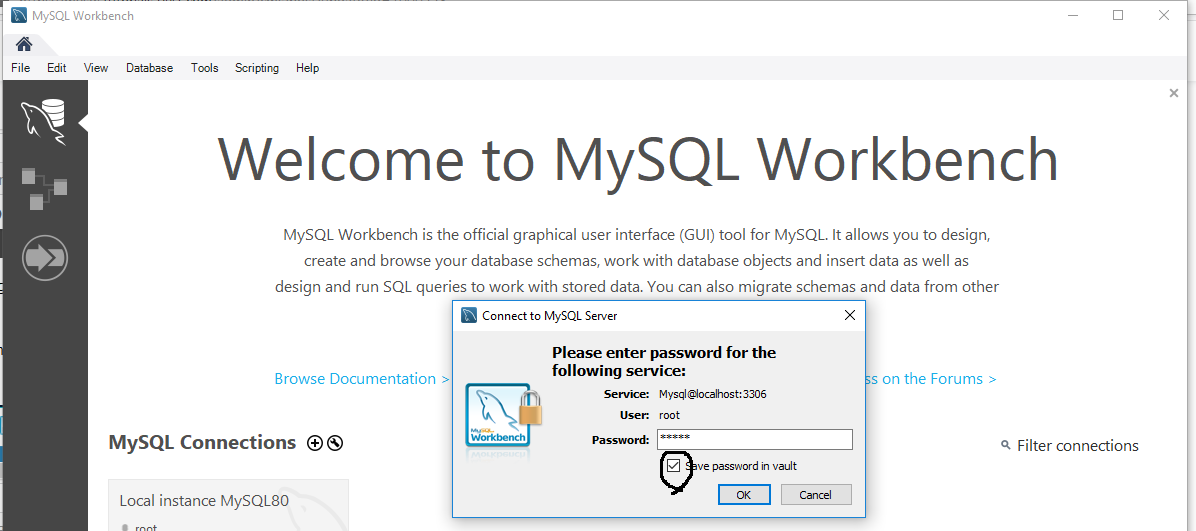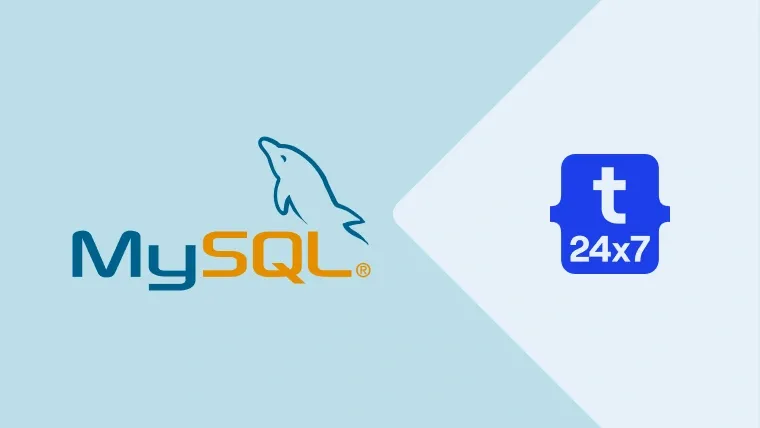Oracle provides the MSI installer to install MySQL Community Server on Windows. This post explains all the steps required to install MySQL Community Server 8 on Windows 10 using the MSI installer. The steps should be similar on other versions of Windows.
Notes: In order to follow this post, you must completely remove the previous installation of MySQL server installed using the installer if it's already installed on the system. You can follow How To Completely Remove MySQL 5.7 From Windows to completely remove the previous installation done using the installer.
You may also be interested in other MySQL specific tutorials including How To Install MySQL 8 on
Step 1: Download Installer
The MSI installers are available on the official site to install MySQL Community Server edition on Windows. The download is available for either online or offline mode. We will download and install the server using the offline download having the larger size to install the selected apps locally with the latest version as shown in Fig 1. The MySQL version available while writing this tutorial was 8.0.19 as shown in Fig 1.

Fig 1
The next page asks to either log in and start the download or download it directly as shown in Fig 2.

Fig 2
Complete the download by following either of the approaches.
Step 2: Install MySQL
Double click the installer to execute it. It will show the default installation options as shown in Fig 3.

Fig 3
I have selected the Custom Option to manually choose the products to be installed on my system as shown in Fig 4.

Fig 4
Now click on the Next Button to continue the installation. The next screen shows the options to select the products as shown in Fig 5. I have selected the required products including the Server, Workbench, and Notifier which might differ in your case. You may also choose the MySQL Shell to execute the queries using MySQL Shell.

Fig 5
Click the Next Button to continue the installation. The Check Requirements Screen shows the options to check for the Visual C++ Redistributable Package as shown in Fig 6.

Fig 6
Click the Execute Button to install the C++ Package to meet the requirements. It will install the package and update the status as shown in Fig 7.

Fig 7
Now click the Next Button to continue the installation. The Installation Screen shows all the products selected by us in the previous steps as shown in Fig 8.

Fig 8
Now click the Execute Button to start installing the selected products. It will show the installation progress as shown in Fig 9.

Fig 9
The installer will mark the product installation as complete as shown in Fig 10 and enable the Next Button to finalize the installation as shown in Fig 10.

Fig 10
Click the Next Button and the installer shows screen having the message to start the configuration of applicable applications as shown in Fig 11.

Fig 11
Now click the Next Button to start the configuration. The next screen shows options to configure MySQL server either as a standalone server with classic replication strategy or InnoDB Cluster as shown in Fig 12.

Fig 12
We have selected the standalone option to keep the installation simple without using advanced cluster options for this tutorial. Click the Next Button and the next screen shows options to choose server type and port as shown in Fig 13.

Fig 13
I have selected the option to show Advanced and Logging Options as highlighted in Fig 13. Now click the Next Button to continue the installation. The next screen shows options to choose the authentication method as shown in Fig 14. Though the newer options are good, in

Fig 14
Now click the Next Button to configure the Accounts and Roles as shown in Fig 15.

Fig 15
Choose at least a medium strength password and add user accounts if required. Click the Next Button to configure windows service as shown in Fig 16.

Fig 16
Keep the default options as selected and click the Next Button. The next screen shows the logging options as shown in Fig 17.

Fig 17
You may disable the Binary Logging to improve the performance if you know the impact on the type of usage on your system. Now click the Next Button to configure the Advanced Options as shown in Fig 18.

Fig 18
Keep the default options selected on click the Next Button. The next screen shows the configuration steps as shown in Fig 19.

Fig 19
Click the Execute Button to apply the configurations. It will complete the configuration and add MySQL Notifier on the system tray as shown in Fig 20.

Fig 20
Click the Finish Button to complete MySQL configuration. The next screen shows success messaged for the configurations as shown in Fig 21.

Fig 21
Click the Next Button to continue. The next screen shows the success message and option to launch Workbench as shown in Fig 22.

Fig 22
Click the Finish Button to complete the installation and launch Workbench. The next screen shows the Welcome Screen of Workbench with a default connection to the MySQL Server as shown in Fig 23.

Fig 23
Click the default connection. It will ask for the password to login as shown in Fig 24.

Fig 24
Enter the password and click OK Button to connect with the MySQL Server. It will show the administration and default panels as shown in Fig 25.

Fig 25
Summary
In this tutorial, we have discussed to install MySQL Community Server 8 with Workbench using the MSI Installer provided by Oracle.

